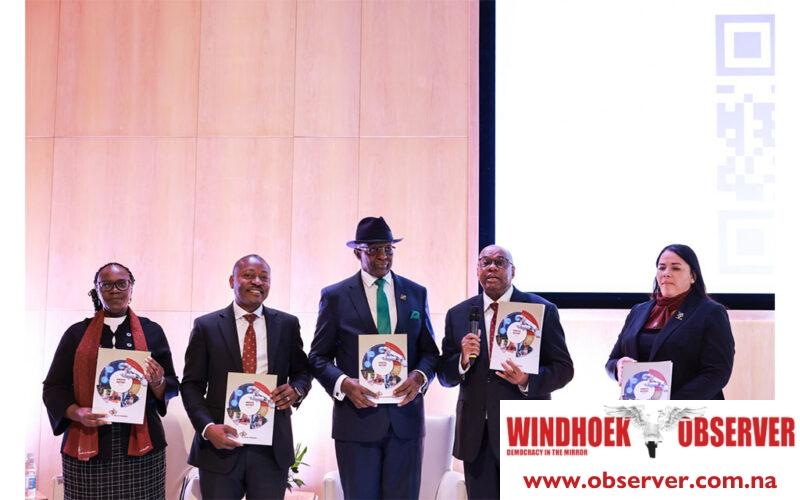Allexer Namundjembo
The Bank of Namibia (BoN) embraced the collection of data, artificial intelligence, and machine learning to build forecasting models for predicting non-performing loans and improving board pack assessments.
This was revealed by the central bank’s governor, Johannes !Gawaxab, during the launch of the 2022-2024 annual report on Monday.
“In addition to the broader use of digital tools, local and foreign government payments were digitised, removing paper and enhancing the visibility of processing for government transactions,” said !Gawaxab.
The report outlines key developments under the bank’s 2022-2024 strategy, including automation, digitalisation and strong financial performance.
According to !Gawaxab, the bank’s automation centre of excellence, enabled the automation of key business processes, with 96 processes redesigned, 69 implemented, and 34 automated.
“We ensured banks meet early warning indicators for capital adequacy, liquidity, and NPLs, while also launching new banknotes and strengthening employee retention and internal promotions,” Gawaxab said.
Financially, the bank recorded a strong financial performance for the 2024 fiscal year.
!Gawaxab reported a N$10 billion increase in investments, boosted by SACU receipts, diamond revenue, high yields, and global interest rates, contributing to an operating surplus of N$1 billion.
He said unrealised foreign exchange gains of N$226 million.
As a result, the bank declared a record dividend of N$720 million to the government, the highest in its history.
A further N$70 million was allocated for the Building Fund Reserve to support future infrastructure expansion.
Throughout its 2022-2024 strategy, the bank maintained inflation below the 7% SADC target and the 4.5% South African Reserve Bank target.
The launched report indicated that the global headline inflation declined in 2024, dropping to 5.8% from 6.9% in 2023, largely driven by moderating costs of energy and food, along with eased labour market pressures in advanced economies.
This decline reflects the positive impact of lower international food and energy prices. Looking ahead, global inflation is expected to continue easing, with projections of 4.2% in 2025 and 3.5% in 2026.
!Gawaxab warned that risks such as supply-side shocks in global commodity markets, export restrictions and climate-related disruptions impact future inflation trends.
“Our 2025-2027 strategy builds on past successes and aims to navigate an evolving operational landscape. It focuses on becoming a smarter, more agile central bank, fostering an inclusive financial system, and supporting Namibia’s transition to a diversified economy through modernised processes, financial inclusion, and collaboration with government and industry.” !Gawaxab said.
National Planning director general Kaire Mbuende said financial services need to be universally accessible, secure, interoperable and affordable.
He welcomed the BoN’s efforts to promote inclusive payment systems, especially the anticipated launch of the country’s fast payment solution, which will reduce transaction costs.
“The Ministry of Finance and Social Grants Management is proud to stand shoulder to shoulder with this institution that continues to demonstrate what it means to lead with foresight, professionalism, purpose and impact. We remain resolute in our commitment to walk this journey with you, as partners in building an economy that is smart, resilient, inclusive, competitive and future-ready, ” Mbuende said.
Mbuende added that he is encouraged by the proactive role that BoN is playing through its digital transformation programme, regulatory sandbox, FinTech strategy, adoption of intelligent systems, and STEAM education programme for young rural populations.
“The bank is not only embracing the AI revolution but also actively shaping its responsible application within our financial sector and country. These actions are laying the foundation for Namibia to thrive in the Fourth and Fifth Industrial Revolutions,” he said.




